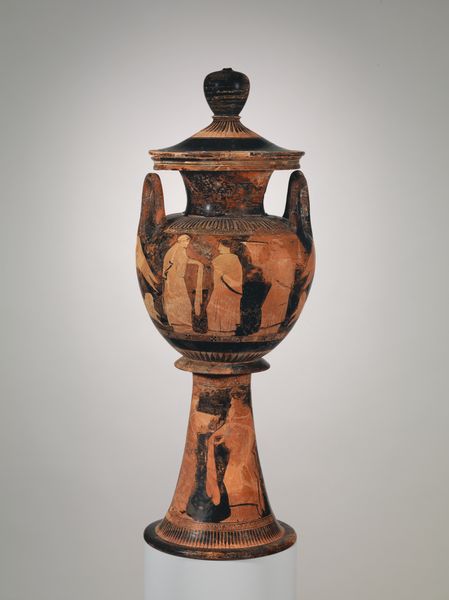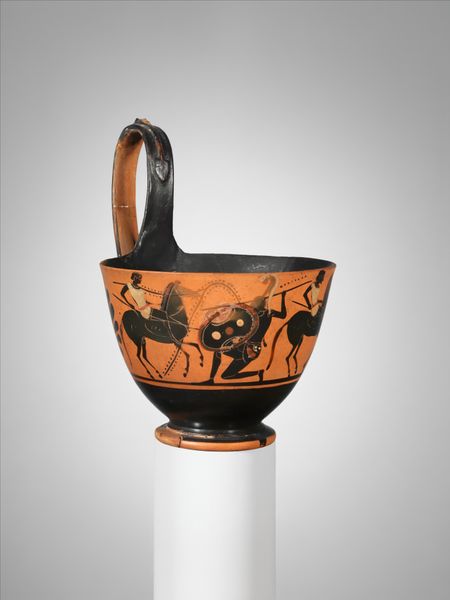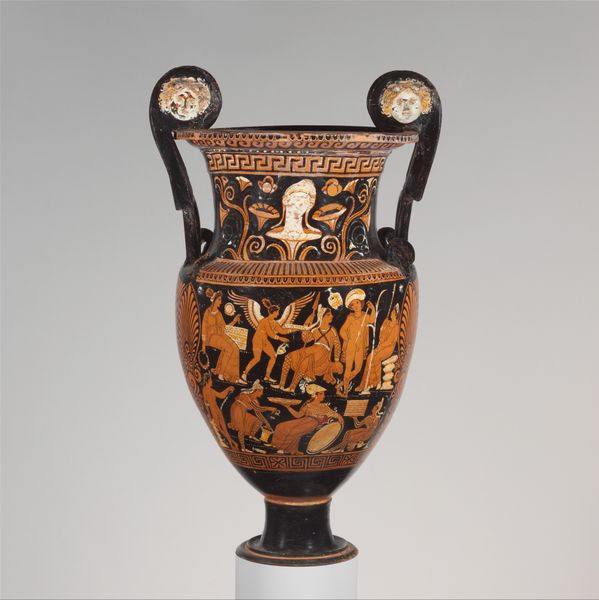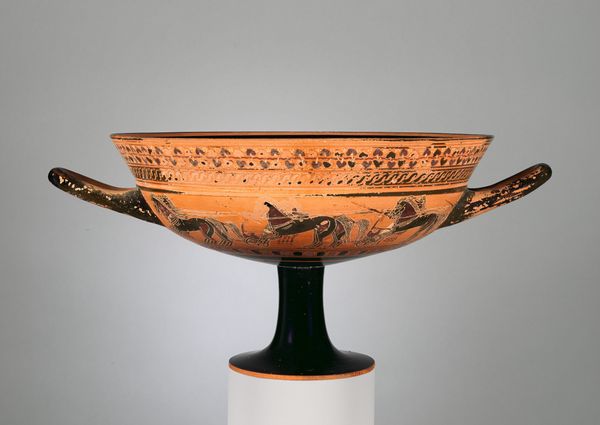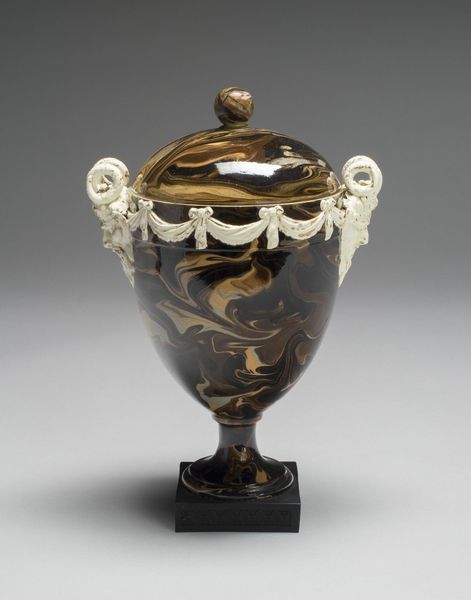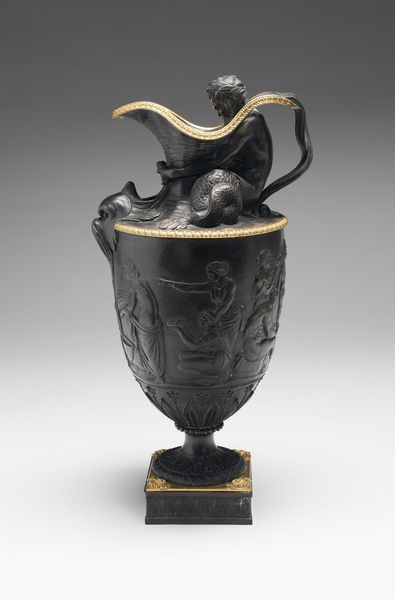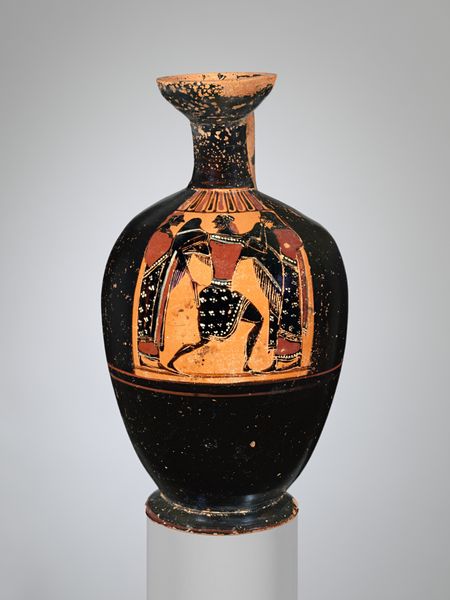
Terracotta one-handled kantharos (drinking cup) 500 BC
0:00
0:00
ceramic, terracotta
#
pottery
#
greek-and-roman-art
#
ceramic
#
figuration
#
roman-art
#
ancient-mediterranean
#
ceramic
#
genre-painting
#
terracotta
Dimensions: H. 11 7/16 in. (29 cm)
Copyright: Public Domain
Curator: This is a terracotta one-handled kantharos, or drinking cup, dating back to 500 BC. It’s currently held at the Metropolitan Museum of Art. It's attributed to the Class of the One-handled Kantharoi. Editor: You know, my first thought? Party! This little cup looks ready for some serious ancient Greek fun. It's giving off Dionysus vibes. Curator: Indeed. Kantharoi, with their deep bowls and high-swung handles, were often associated with Dionysus, the god of wine and theatre. This object isn't simply a drinking vessel; it is steeped in ritualistic and symbolic significance. Editor: I dig that. So, it’s not just about getting your buzz on; it’s a whole vibe. I can almost hear the music, the philosophical arguments dissolving into drunken laughter… Curator: And, likely, within very specific social contexts that reflect the privileges of some over others within Athenian society, where enslaved populations and women, generally, would not participate in the symposium. Consider how these vessels facilitated—or excluded—participation. Editor: Ouch, yeah, the ancient world could get dark real fast. So, even something as simple as a party cup becomes loaded, right? Still, the decoration – I’m noticing the figures, all frozen in action. Lyres, dancers… maybe a theatrical performance unfolding? Curator: Precisely! The cup allows scholars glimpses into daily lives and prevalent ideals of the period, but one has to read such images carefully. Were certain stories more represented than others and why? Were specific types of bodies made to appear more natural, while others became abject or hypersexualized, thereby legitimizing unequal power relations in that era? Editor: It really makes you wonder about the untold stories of those times. You look at it now, though, and there's still this undeniable joy humming beneath the surface. This vessel whispers a reminder that maybe there are enduring connections. Maybe we can try to relate in the gaps...or despite these fraught histories? Curator: Absolutely, acknowledging complexities of a shared past offers opportunities to reimagine contemporary reality. Thinking through visual vocabularies across generations becomes necessary labor. Editor: Agreed. Now I’m inspired. I think I’ll go make my own art with my own, probably historically flawed, little hands. Curator: Then I consider today's conversations a success.
Comments
No comments
Be the first to comment and join the conversation on the ultimate creative platform.





